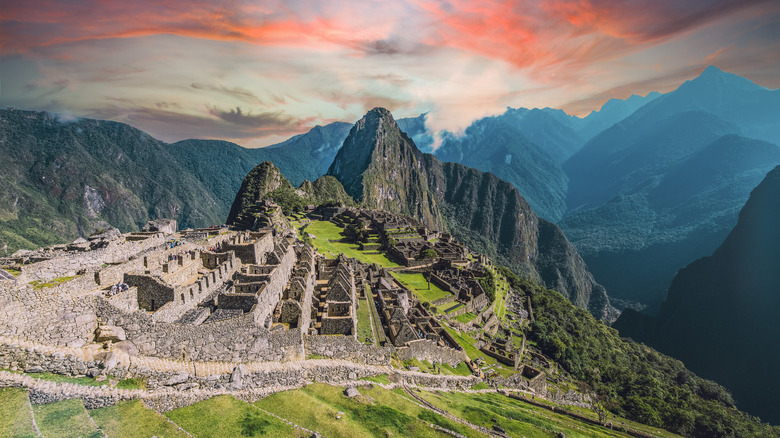This South American Tourist Spot Will Soon Join The Few Countries Offering Digital Nomad Visas
Peru, known for its rich cultural heritage, stunning landscapes, and the mystical Machu Picchu, is poised to become a new haven for digital nomads. With the announcement of its digital nomad visa program, Peru is set to join the ranks of countries adapting to the trend of remote work. This move will help diversify Peru's tourism strategy and open up exciting opportunities for global professionals seeking a unique work-life balance.
The Peruvian government decided to introduce a digital nomad visa on November 14, 2023, with the Legislative Decree 1582. Other South American countries, specifically Brazil, Colombia, Ecuador, and Uruguay, have already introduced digital nomad visas in 2022 and 2023. This is a fairly new development on the continent, and most other countries have yet to follow suit. This initiative reflects a global shift towards more flexible work arrangements, recognizing the economic potential of attracting location-independent professionals.
Details about Peru's digital nomad visa requirements, duration, and application process are still being finalized. It's expected that the visa will allow stays of up to one year, with a possible extension. Peruvian tourist visas can only grant stays of up to 90 days, while U.S. visitors can stay visa-free for up to 183 days. Applicants will need to prove their employment status as a remote worker for companies based outside Peru (applicants will not be allowed to work for Peruvian companies) and show sufficient financial means to support their stay. More details will emerge once the Peruvian government finalizes them.
What Peru offers digital nomads
Peru is a compelling destination for digital nomads, and not just because of the world-renowned Inca Trail or the culinary delights of Lima. As the third-largest country in South America, Peru offers a diverse range of environments — from the Amazon rainforest to the Andes mountains and the Pacific coastline. Each region presents unique experiences and climates, catering to a variety of preferences and travel opportunities. Beyond the stunning path to Rainbow Mountain, there are countless other archaeological sites, natural wonders, and vibrant cities to explore.
Moreover, the country's cultural background offers a deep dive into Incan heritage, colonial history, and vibrant contemporary art and music scenes. Nomads can check out local festivals (La Fiesta Candelaria in Puno), traditional markets (Mercado de Artesanía in Pisac), and community projects (Volunteer World). The prolonged stay granted by the digital nomad visa will encourage a far more profound immersion in Peruvian life than any tourist visa could ever offer.
The cost of living in Peru is another significant draw. Compared to many Western countries, accommodation, food, and other essentials are relatively affordable, making it an attractive option for those looking to maximize their quality of life while working remotely. For example, the average monthly budget for a couple comes to less than $2,000, while a single individual can live comfortably for under $1,000 a month. The only things that will cost more than usual are imports — which should only encourage you to shop, eat, live, and sip pisco sours like a local.
Considerations for digital nomads
There are some practical considerations for digital nomads. Internet connectivity and speeds, while improving, can vary across major cities, and especially in more rural areas. Prospective nomads should research their desired location's infrastructure to ensure it can meet their work needs. Language can also be a barrier. While Spanish is widely spoken, English proficiency is not as high, especially in more rural areas. Because only 11% of the population speaks English, learning basic Spanish can be immensely beneficial for daily interactions.
Peru's emerging status as an international destination for remote workers means that networking and community-building opportunities are likely to grow. Hubs are vital for digital nomads — co-working spaces, expat groups, and online forums are excellent resources for meeting like-minded individuals and finding local support and information. The influx of nomads will have a significant impact on Peru's economy, as increased demand for housing, work-friendly cafés, and community services can stimulate economic growth. However, it's essential for both the government and remote workers to consider the impact on local communities and strive for sustainable approaches.
Peru's digital nomad visa positions it as a trendsetter in South America. It highlights the country's adaptability and forward-thinking approach to new tourism and work trends — a move that could inspire even more countries in the region to consider similar initiatives. If you're a remote worker and the "Land of the Incas" is calling your name, a digital nomad visa is on the horizon.


